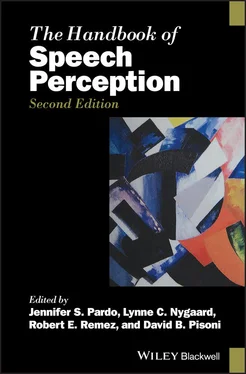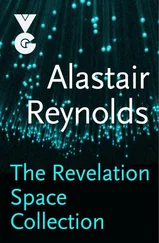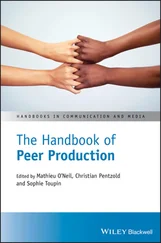The ear’s natural ease with the dynamic spectro‐temporal patterns of speech contrasts with the eye’s difficulties: oscillograms are impossible, spectrograms formidably hard, to read – unless one already knows what they say. On the other hand, the eye’s ease with the static linear string of alphabetic symbols contrasts with the ear’s difficulties: the ear has limited powers of temporal resolution, and no one has ever devised an acoustic alphabet more efficient than Morse code, for which professional rates of perception are less than a tenth of either normal speech or normal reading. Thus, properties of speech that lend themselves to hearing (exactly what they are, we still do not know) are obstacles to the eye, while properties of writing that lend themselves to sight are obstacles to the ear.
Beyond the immediate sensory qualities of speech, a transcript omits much else that is essential to the full message. Most obvious is prosody, the systematic variations in pitch, loudness, duration, tempo, and rhythm across words, phrases, and sentences that convey a speaker’s intentions, attitudes, and feelings. What a transcript leaves out, readers put back in, as best they can. Some readers are so good at this that they become professional actors.
Certain prosodic qualities may be peculiar to a speaker’s dialect or idiolect, of which the peculiar segmental properties are also omitted from a standard transcript. What role, if any, these and other indexical properties (specifying a speaker’s sex, age, social status, person, and so on) may play in the perception of linguistic structure remains to be seen. I note only that, despite their unbounded diversity within a given language, all dialects and idiolects converge on a single phonology and writing system. Moreover, and remarkably, all normal speakers of a language can, in principle if not in fact, understand language through the artificial medium of print as quickly and efficiently as through the natural medium of speech.
Alphabetic writing and reading have no independent biological base; they are, at least in origin, parasitic on spoken language. I have dwelt on them here because the human capacity for literacy throws the biological oddity of speech into relief. Speech production and perception, writing and reading, form an intricate biocultural nexus at the heart of modem western culture. Thanks to over 50 years of research, superbly reviewed in all its diversity in this substantial handbook, speech perception offers the student and researcher a ready path into this nexus.
Michael Studdert‐Kennedy
Haskins Laboratories
New Haven, Connecticut
The Second Edition of the Handbook of Speech Perception presents a collection of essays on the research and theory that have guided our understanding of human speech perception. From their origins in psychoacoustic assessment of phonetics for telecommunication systems, the concerns of research have broadened with the growth of cognitive science and neuroscience. Now truly interdisciplinary in span, studies of speech perception include basic research on the perception of linguistic form while encompassing investigations of multisensory speech perception, speech perception with sensory prostheses, speech perception across the life span, speech perception in neuropathological disorders, as well as the study of the interchange of linguistic, paralinguistic, and indexical attributes of speech. Empirical practice has often turned to speech as a way to assess the potential of a new idea, making speech perception an intellectual crossroad for the subfields that compose contemporary behavioral neuroscience. This intellectual and scientific convergence is also reflected in the topics, large and small, that are represented here. The Second Edition, specifically, showcases new concerns, presents new understanding of lines of classic investigation, and offers a critical assay of technical and theoretical developments across the field of research.
Editors face many decisions in composing a handbook, one that can be useful for student and researcher alike. Early in our discussions, we understood that we would not be creating a comprehensive review of method and theory in research on speech perception. For one reason, technical methods and technical problems evolve rapidly as researchers explore one or another opportunity. For another, the Annual Reviews already exist and can satisfactorily offer a snapshot of a field at a particular instant. Aiming higher, we asked each of the contributors to articulate a point of view to introduce the reader to the major issues and findings in the field. The result is a broad‐ranging and authoritative collection of essays offering perspectives on exactly the critical questions that are likely to move a rapidly changing field of research.
The twenty‐five chapters are organized into five sections. Each essay provides an informed and critical exposition of a topic central to understanding, including: (1) a synthesis of current research and debate; (2) a narrative comprising clear examples and findings from the research literature and the author's own research program; and (3) a forward look toward anticipated developments in the field.
In Part I, Sensing Speech , four chapters cover a wide range of foundational issues in the field. Robert Remez discusses the perceptual organization of speech and how it differs from other auditory signals; Lawrence Rosenblum and Josh Dorsi present an argument and evidence for the primacy of multimodal speech perception; Jan Schnupp and Oiwi Parker‐Jones describe the representation of speech in the brain; and Kevin Munhall and colleagues explain the role of perception in controlling speech production.
In Part II, Perception of Linguistic Properties , eight chapters survey major topics in human speech perception. Shelia Blumstein describes the role of linguistic features in speech perception and lexical access; Keith Johnson and Matthias Sjerps discuss perceptual accommodation of differences between individual talkers; Rajka Smilianic examines the differences between casual and clear speech; Conor McLennan and Sara Incera Burkert present a critical appraisal of specificity effects in spoken word identification; Anne Cutler and Alexandra Jesse discuss the role of lexical stress in the perception of spoken words; Zinny Bond considers speech misperception in an essay on slips of the ear; Michael Vitevitch and Faisal Aljasser assess the contribution of phonotactic knowledge to speech perception; and Diana Van Lancker‐Sidtis and Sun‐Yeung Yang discuss the implications of the use of formulaic speech.
Part IIIis devoted to the Perception of Indexical Properties , those aspects of the speech of individual talkers that make them identifiable. The five chapters in this section include a discussion of the perception of dialectal variation, by Cynthia Clopper; the resolution of the spoken signals of individual identity, by Diana Van Lancker‐Sidtis and Romy Zäske; the integration of linguistic and non‐linguistic properties of speech, by Lynne Nygaard and Christina Tzeng; an essay on perceptual learning of accented speech, by Tessa Bent and Melissa Baese‐Berk; and an appraisal of the ability of children to notice indexical properties of speech, by Suzanne Levi.
In Part IV, the handbook considers Speech Perception by Special Listeners . Susan Nittrouer examines speech perception by children; Mitchell Sommers describes accounts of audiovisual speech perception in older adults; Cynthia Hunter and David Pisoni consider speech perception in prelingually deaf children when a cochlear implant is used; and Emily Myers examines the perception of speech following focal brain injury.
Part Vincludes four essays each offering a Theoretical Perspective on a new or classic concern of the field. Lawrence Raphael provides a detailed retrospective on the acoustic cues to segmental phonetic perception; Jennifer Pardo and Robert Remez offer a review of the influential idea that perception of speech relies on the dynamics of the production of speech; Susan Brady and Axelle Calcus consider the relation between reading and speech perception; and David Pisoni provides a review of the emerging field of cognitive audiology.
Читать дальше








![О Генри - Справочник Гименея [The Handbook of Hymen]](/books/407356/o-genri-spravochnik-gimeneya-the-handbook-of-hymen-thumb.webp)



